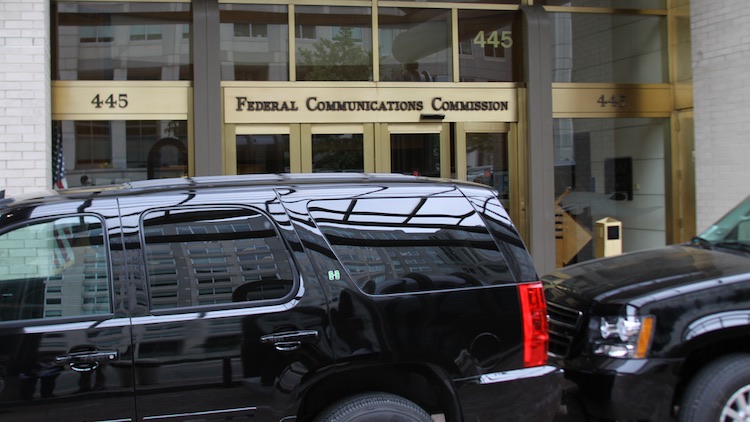Rate Regulation By Any Other Name

For over a decade, the thorny issue of network neutrality has loomed over the telecom debate. It started with the simple notion that the Federal Communications Commission should stop broadband service providers (BSPs) from engaging in strategic anticompetitive conduct. It eventually morphed into the Obama administration subjecting the internet to legacy common-carrier regulation under Title II of the Communications Act designed for the old Ma Bell telephone monopoly of the last century.
While much of the debate to date has revolved around the threshold legal question of whether the commission has the authority to reclassify in the first instance, few have focused on perhaps the more substantive (yet notably neglected) legal problem—the commission’s actual implementation of Title II, in particular the ratemaking provisions of Sections 201 and 202 and its forbearance authority in Section 10.
Why are these statutory provisions important? Because at bottom, net neutrality is nothing more than good old-fashioned rate regulation. Accordingly, if you are going to impose rate regulation, then Title II prescribes certain rules you must adhere to in order to ensure that the regulated firms’ Fifth Amendment due process rights are not violated.
Unfortunately for the FCC, these rules got in the way of what it wanted to do in its 2015 Open Internet Order—in particular, (1) to force BSPs to give edge providers terminating access without compensation (i.e., a regulated price of zero) in direct contradiction of the “just and reasonable” standard of Section 201; (2) to impose a blanket ban on reasonable discrimination in direct contradiction to Section 202; but yet (3) to give the patina of a “light touch” approach even though the agency was directly dictating a confiscatory rate of zero, to use its Section 10 forbearance authority to eliminate the tariffing requirements of Section 203 even though the agency found BSPs to be “gatekeepers.” A proper reading of the Communications Act and the case law requires the exact opposite result.
The commission’s solution to its legal pickle? As it proudly admitted in its 2015 Open Internet Order, it would simply ignore the “vast majority of rules adopted under Title II” (along with the years of case law and its own precedent) by selectively picking and choosing whatever provisions of Title II it found convenient to achieve a results-driven outcome, so that it could “tailor [Title II] ... for the 21st century.” In effect, since the statute prohibited the rules the com-mission wished to impose, the agency simply rewrote the statute.
What is important to understand is that the ratemaking and forbearance provisions of Title II are not solely designed to govern the conduct of the regulated firm (the commission’s rules serve that function), but to govern the conduct of the regulator. The FCC’s 2015 Open Internet Order therefore raises an important question about the nature of the regulatory state—that is, should an administrative agency be permitted on its own initiative to expand its power beyond its statutory mandate at the expense of private actors’ Fifth Amendment due process protections? If an administrative agency, by its own admission, is free to interpret selectively its own enabling statute to fit the times, then what is the role of Congress? At stake, in other words, is whether an administrative agency should be permitted to re-write the law—especially when it does so simply to fit a political agenda.
According to the D.C. Circuit in United States Telecom v. FCC, the answer appears to be “yes.” Citing the Supreme Court’s seminal case in Brand X, the D.C. Circuit found in USTelecom that the FCC had wide—nearly unbounded—latitude to interpret the Communications Act and not only upheld the agency’s decision to reclassify but also upheld the agency’s ability to “tailor” how it chose to implement Title II. In so doing, the D.C. Circuit—rather by design or by omission—has taken Chevron deference to the extreme.
USTelecom has greatly expanded the commission’s authority to set the rates, terms and conditions of private actors well beyond its statutory mandate. Accordingly, the statutory construct of “Title II” now has no meaning; it is some bizarre legal hybrid that the FCC has made up and the D.C. Circuit has sanctioned. For those who care deeply about due process and the rule of law, the precedent set by the D.C. Circuit in USTelecom is deeply troubling and is a case that we will likely have to deal with its aftermath for years to come.
If anything, USTelecom proves the old adage that “bad facts make bad law.” While the commission certainly has great latitude to interpret the Communications Act, as the Supreme Court has held, an administrative agency must nonetheless operate “within the bounds of reasonable interpretation” and it is not at liberty to pick-and-choose select provisions of the statute to govern for the sake of expediency.
Or does it? With the D.C. Circuit’s decision in USTelecom, the FCC apparently now has carte blanche to tailor its enabling statute to fit a results-driven outcome and trample on key due process concerns so long as it can sprinkle some pixie dust about promoting broadband deployment.
And if that unbridled expansion of regulatory power doesn’t scare you, then it damn well should.
Lawrence J. Spiwak is president of the Phoenix Center for Advanced Legal & Economic Public Policy Studies.
Broadcasting & Cable Newsletter
The smarter way to stay on top of broadcasting and cable industry. Sign up below
